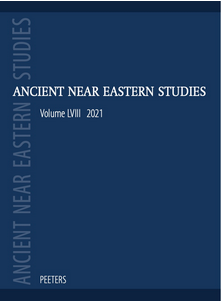Publications so far
0
| 1. |  | Amelirad, Sheler; Azizi, Eghbal: Kani Koter, Iron Age Cemetery from Iranian Kurdistan. In: Iran, vol. 59, iss. 1, pp. 57-76, 2019. (Type: Journal Article | Abstract | Links | BibTeX)@article{nokey,Kani Koter cemetery is located in Iranian Kurdistan, close to Dere Pemeyan (or Persian Dare Panbedan) village, between the ancient sites of Ziwiye and Karafto Cave (Figure 1). In this article, we discuss the material discovered from one of the graves in this cemetery, its chronology, and cultural associations. Unfortunately, tomb robbers plundered this grave, completely ruining the tomb's stratigraphic context. Fortunately, in 2016 the Cultural Heritage Organization of Kurdistan rescued all of the stolen artefacts, and today the collection is stored at the Sanandaj Museum. The grave has yielded a number of elaborately decorated objects that belong nominally to Assyrian, Urartian and Mannaean artistic traditions, with the date for the finds being established by means of comparisons with Assyrian and Urartian artefacts. |
| 2. |  | Amelirad, Sheler; Razmpoush, Abbas: A Newly Discovered Iron Age Site at Sarrez, Iranian Kurdistan. In: Ancient Near Eastern Studies, vol. 52, pp. 207-216, 2015. (Type: Journal Article | Abstract | Links | BibTeX)@article{nokey,Sarrez is an ancient site in Kurdistan Province, Iran, near the present-day country town of Kamyaran. This site was discovered accidentally during dam construction activities. It has yielded some metal artefacts, potsherds and bones that are comparable to Iron Age III instances. The collection in its entirety is discussed in this article. One of the main objects from Sarrez is a decorated beaker with a scene on its wall that is comparable in many ways to examples of Neo-Assyrian art. The purpose of this paper is to publish and date the metal objects of the Sarrez collection based on this bronze beaker, which is one the few beakers from western Iran which has been found in a secure context. |
2019 |
|
 | Amelirad, Sheler; Azizi, Eghbal: Kani Koter, Iron Age Cemetery from Iranian Kurdistan. In: Iran, vol. 59, iss. 1, pp. 57-76, 2019. (Type: Journal Article | Abstract | Links | BibTeX | Tags: Chronology, Iron Age, Kurdistan, Material Analysis)@article{nokey,Kani Koter cemetery is located in Iranian Kurdistan, close to Dere Pemeyan (or Persian Dare Panbedan) village, between the ancient sites of Ziwiye and Karafto Cave (Figure 1). In this article, we discuss the material discovered from one of the graves in this cemetery, its chronology, and cultural associations. Unfortunately, tomb robbers plundered this grave, completely ruining the tomb's stratigraphic context. Fortunately, in 2016 the Cultural Heritage Organization of Kurdistan rescued all of the stolen artefacts, and today the collection is stored at the Sanandaj Museum. The grave has yielded a number of elaborately decorated objects that belong nominally to Assyrian, Urartian and Mannaean artistic traditions, with the date for the finds being established by means of comparisons with Assyrian and Urartian artefacts. |
2015 |
|
 | Amelirad, Sheler; Razmpoush, Abbas: A Newly Discovered Iron Age Site at Sarrez, Iranian Kurdistan. In: Ancient Near Eastern Studies, vol. 52, pp. 207-216, 2015. (Type: Journal Article | Abstract | Links | BibTeX | Tags: Iron Age, Kurdistan, Material Analysis, Zagros, Zagros Highlands)@article{nokey,Sarrez is an ancient site in Kurdistan Province, Iran, near the present-day country town of Kamyaran. This site was discovered accidentally during dam construction activities. It has yielded some metal artefacts, potsherds and bones that are comparable to Iron Age III instances. The collection in its entirety is discussed in this article. One of the main objects from Sarrez is a decorated beaker with a scene on its wall that is comparable in many ways to examples of Neo-Assyrian art. The purpose of this paper is to publish and date the metal objects of the Sarrez collection based on this bronze beaker, which is one the few beakers from western Iran which has been found in a secure context. |
